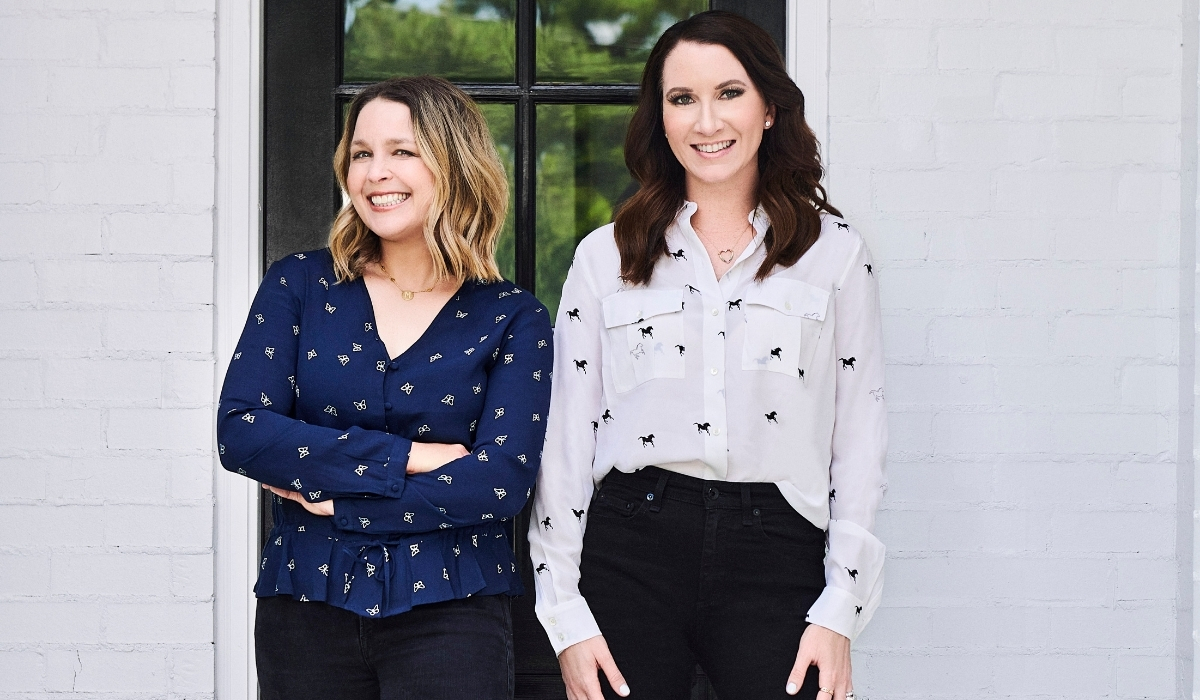Start with Smart, Then Make It Pretty

Much like starting small with a drawer, when you approach organizing, it helps to be systematic. We firmly believe the best way to organize any and every space is to first make it as functional as possible, then make it as beautiful as possible. It’s imperative that you operate in this order because if you’re only trying to make a space look good, it won’t function properly, and it’ll end up deteriorating. If you start with what’s smart, you can always boost the style after the systems are in place. And trust us, you’re bound to make it pretty anyway because you’ll love your space more than ever.
Watch Sunday Paper Live with Joanna & Clea!
When considering smart systems, it’s helpful to think in terms of zones, the boundaries that will contain your different kinds of stuff. They can be large zones you set up in a pantry (such as cooking staples, food, and storage items), or small zones that section off a beauty supply drawer in your bathroom (such as cotton balls, makeup, nail polish, and face wipes). These thematic boundaries are both healthy and helpful. They not only give the items a designated space, but they also hold you accountable for not exceeding that space. And if you follow our zone principles, we promise you will set yourself up for success.
- Contain the entire category. We really don’t enjoy separating like items. Putting some snacks in one area and some in another is panic attack territory. You risk losing the items, or buying the items again because you can’t take stock of everything at a glance. We like to say that all friends belong together, and no one gets left behind! Yes, we frequently talk about inanimate objects as if they are friends.
- Create a flow that makes logical sense. Your goal is to create an order for your zones that’s intuitive to follow. To use the pantry analogy again, the food zone would have a day-to-night flow, from breakfast items to dinner items, and snacks can flow into sweets. The cooking zone would have oils and vinegars next to the condiments, and be adjacent to baking supplies (these are all building blocks of cooking). Or think about setting up a playroom: You could create zones for how your child might use the space—a quiet zone for coloring and reading, and a play zone for building blocks and dress-up. Contextualizing each zone helps to strengthen the system because there is genuine thought behind each and every decision. The use case for your things is clear, so the system is less likely to fail.
- Consider who is using the space. We say this a lot, but it’s worth repeating. Where and how you position your zones is key to successful maintenance. Do you need to keep items on low shelves for your kids to reach by themselves, or on a high shelf out of their reach? Is the station by the front door easily accessible for every member of the household?
Considering these things in advance might (no promises) mean your children, spouse, partner, roommate, and more will actually adhere to your carefully thought-out organizing principles.
Reprinted from The Home Edit Life. Copyright © 2020 by The Home Edit Print, LLC. Photographs copyright © 2020 Clea Shearer. Published by Clarkson Potter, an imprint of Penguin Random House, LLC.
This essay was featured in the September 20, 2020 edition of The Sunday Paper. The Sunday Paper publishes News and Views that Rise Above the Noise and Inspires Hearts and Minds. To get The Sunday Paper delivered to your inbox each Sunday morning for free, click here to subscribe.

